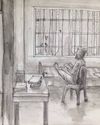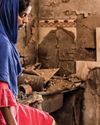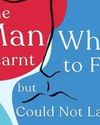How Pa Ranjith’s Kaala changes the way we imagine the city / Film

Last summer, on a visit to my home city of Bengaluru, I stood waiting for a train at the newly renamed Dr BR Ambedkar Vidhana Soudha metro station. In the background, I could hear gentle twangs of a veena in the style of Carnatic classical music. The contrast between the name of the station and the style of music, which has been the reserve of upper castes for centuries, was quite amusing to me. However, the music is so ubiquitous in the city that I doubt most long-term residents even notice it. To many outsiders, it is a defining marker of Bengaluru’s culture.
I wondered how many of these defining cultural markers reflect the true demography of Bengaluru. How did a cosmopolitan and diverse city of mostly meat-eating people come to largely be thought of as a city of idli, dosa, filter coffee and Carnatic music? The culture of indigenous settlers, working castes and those who live in auto-constructed spaces—which most residents, without the slightest sense of tragic irony, call “colonies”—is omitted from the mainstream. When one thinks of Bengaluru, one rarely thinks of the hip-hop, the football grounds or the beef stalls that are integral to the culture of its poorer citizens. As the city globalises, these are the cultural practices that would be allowed to vanish; what would survive are the idli, dosa, filter coffee and Carnatic music, considered more “worthy” of preservation.
This story is from the July 2018 edition of The Caravan.
Start your 7-day Magzter GOLD free trial to access thousands of curated premium stories, and 9,000+ magazines and newspapers.
Already a subscriber ? Sign In
This story is from the July 2018 edition of The Caravan.
Start your 7-day Magzter GOLD free trial to access thousands of curated premium stories, and 9,000+ magazines and newspapers.
Already a subscriber? Sign In

Mob Mentality
How the Modi government fuels a dangerous vigilantism

RIP TIDES
Shahidul Alam’s exploration of Bangladeshi photography and activism

Trickle-down Effect
Nepal–India tensions have advanced from the diplomatic level to the public sphere

Editor's Pick
ON 23 SEPTEMBER 1950, the diplomat Ralph Bunche, seen here addressing the 1965 Selma to Montgomery March, was awarded the Nobel Peace Prize. The first black Nobel laureate, Bunche was awarded the prize for his efforts in ending the 1948 Arab–Israeli War.

Shades of The Grey
A Pune bakery rejects the rigid binaries of everyday life / Gender

Scorched Hearths
A photographer-nurse recalls the Delhi violence

Licence to Kill
A photojournalist’s account of documenting the Delhi violence

CRIME AND PREJUDICE
The BJP and Delhi Police’s hand in the Delhi violence

Bled Dry
How India exploits health workers

The Bookshelf: The Man Who Learnt To Fly But Could Not Land
This 2013 novel, newly translated, follows the trajectory of its protagonist, KTN Kottoor.